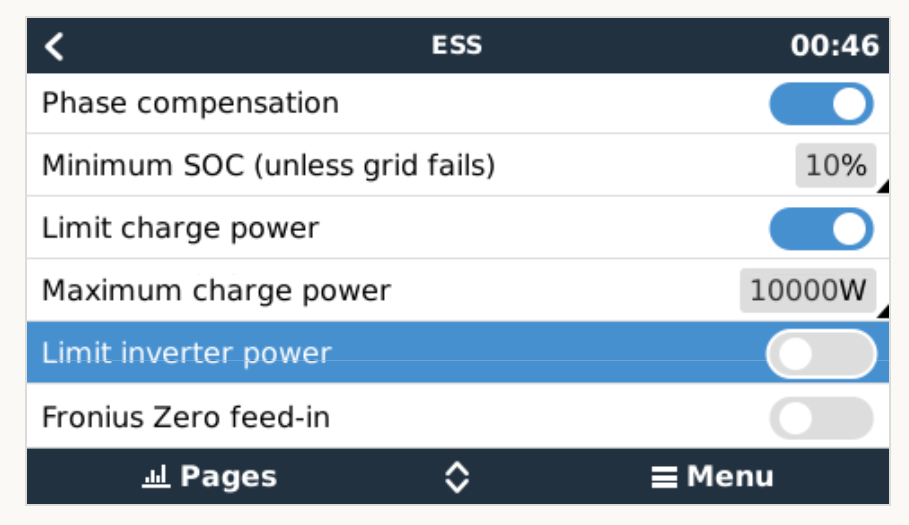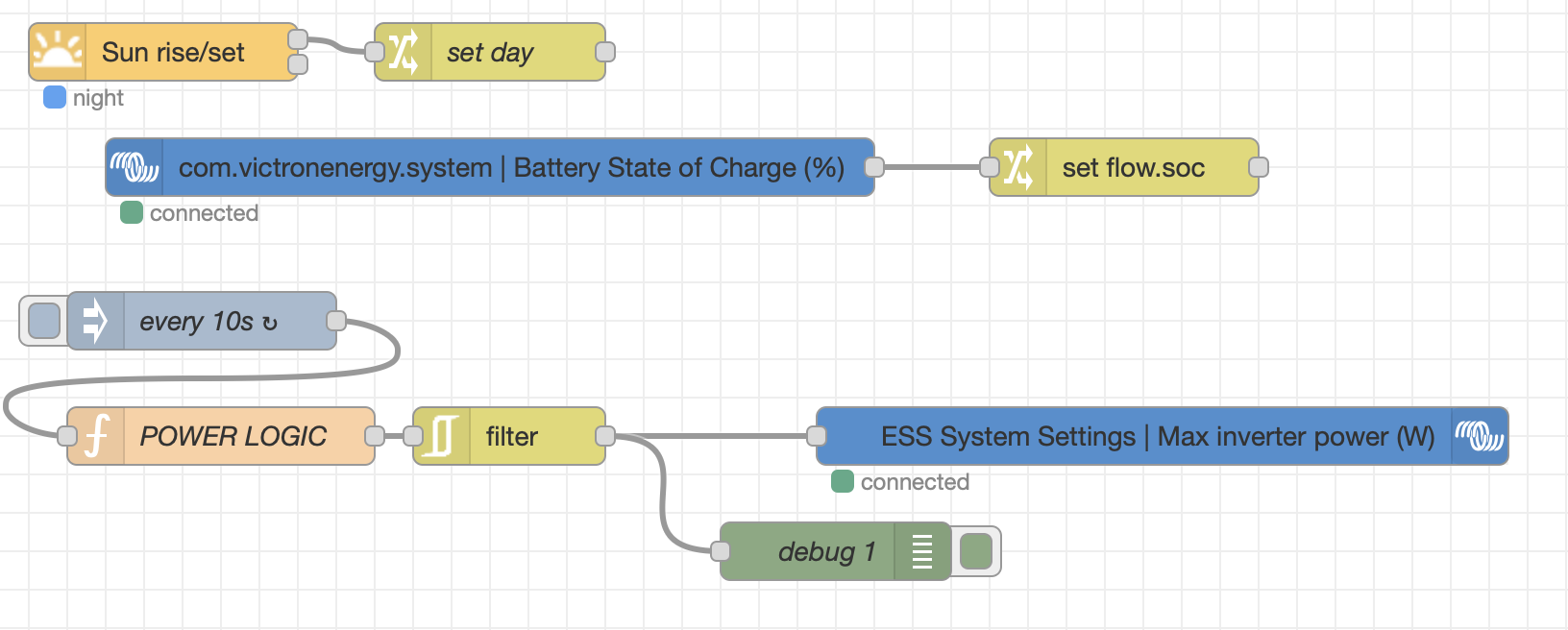Idea:
Add the possibility to limit the discharge current of the battery in the venus settings.
Rationale:
ESS installations are often overcomitted in terms of installed PV power. During seasons with lots of sun, it would be beneficial to sell as much power as possible to the grid or use it on-site. When the system is on battery, it might be necessairy to limit the battery discharge current to enhance battery lifetime and get more Ah out of a smaller battery bank.
From my point of view, this could be done by introducing a new config option in the ESS menu:
Limit inverter power (discharging) -> 0W - XXX W (maybe the existing limit can be renamed to "Limit inverter power (charging)
or by introducing a distinct discharge current limit alongside the charge current limit, maybe in the system settings where the charge current limit is found.
In this way, the multi can convert as much as it can to AC during solar peaks and either sell it to the grid or use it locally, and limit the output to a much lower value once the system is on battery, to power for example essential loads with lower discharge C-ratings applied to the battery.





